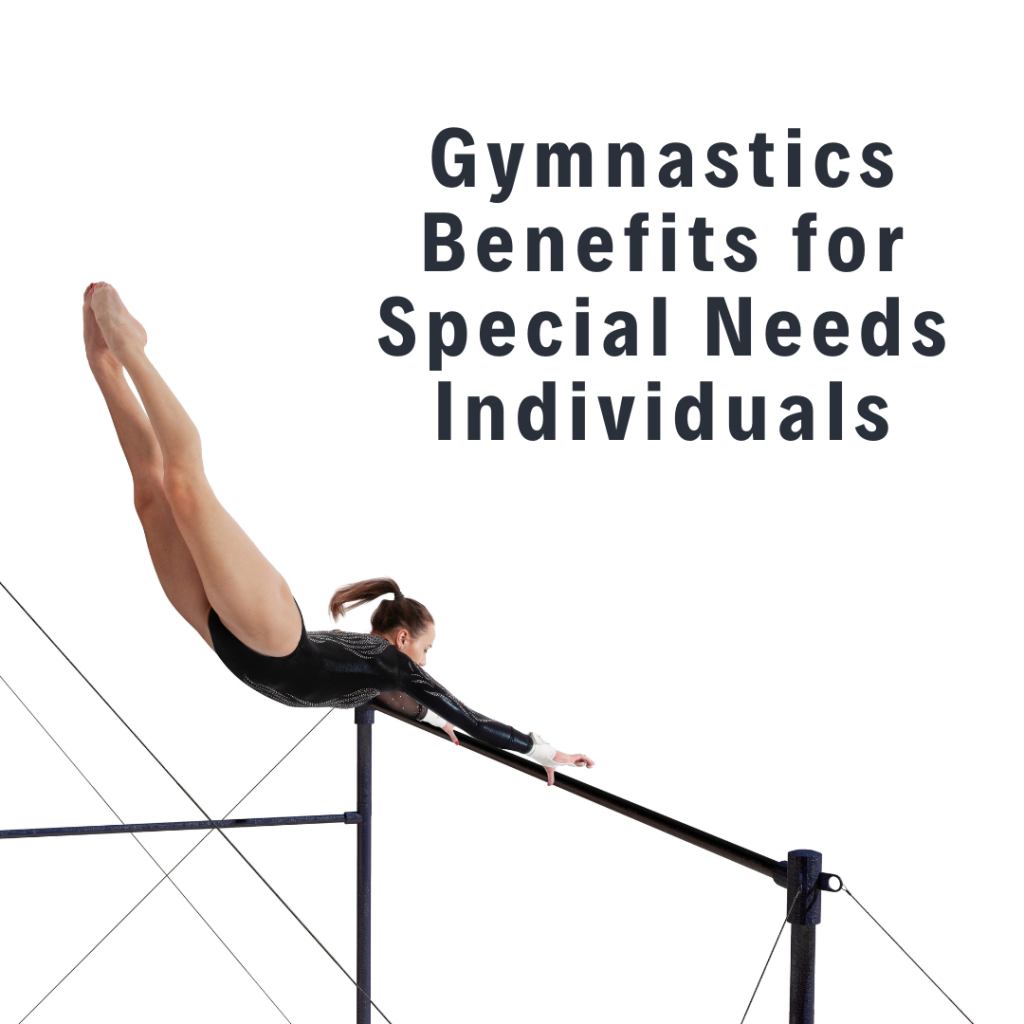Introduction
The world of gymnastics conjures images of incredible feats of strength, agility, and grace. But gymnastics isn’t just for elite athletes; it can also be a rewarding and inclusive activity for individuals with special needs. This article explores the transformative power of gymnastics for this population, highlighting its benefits, adaptations, and inspiring stories of success that emerge from inclusive programs.
Benefits of Gymnastics for Special Needs Individuals
Gymnastics offers a unique blend of physical and mental challenges that can benefit individuals with special needs. Here’s a breakdown of some key advantages:
Physical Development
Gymnastics promotes gross motor skills development, including balance, coordination, strength, and flexibility. Repetitive movements and exercises help individuals gain control over their bodies and improve overall physical fitness.
Sensory Integration
Gymnastic activities engage various senses, promoting sensory integration. The vestibular system (balance), proprioception (body awareness), and tactile senses are all stimulated through movement on mats, beams, and bars.
Cognitive Development
Learning new skills and routines requires focus, memory, and problem-solving skills. Gymnastics can enhance cognitive function and promote mental stimulation.
Social Interaction
Gymnastics classes can provide a supportive environment for social interaction and teamwork. Individuals can build friendships, learn communication skills, and develop a sense of belonging.
Increased Confidence
Mastering new skills and overcoming challenges boosts self-esteem and confidence. Gymnastics can empower individuals with special needs to believe in their capabilities and celebrate their achievements.
Improved Body Awareness
Gymnastics activities enhance proprioception, or the body’s awareness of its position in space. This improved body awareness can benefit individuals with conditions like sensory processing disorders.
Stress Relief and Fun
Physical activity is a well-known stress reliever, and gymnastics can be a joyful and engaging way for individuals to release tension and have fun.
Types of Special Needs that can Benefit from Gymnastics
The benefits of gymnastics extend to a wide range of special needs. Here are a few examples:
Down Syndrome: Gymnastics can improve muscle tone, coordination, and balance, which are common challenges for individuals with Down syndrome.
Autism Spectrum Disorder (ASD): The repetitive nature of gymnastics routines and the focus on following instructions can be beneficial for individuals with ASD.
Attention Deficit Hyperactivity Disorder (ADHD): The physical exertion and structured environment of gymnastics classes can provide an outlet for energy and help improve focus and attention span in individuals with ADHD.
Cerebral Palsy: Adapted gymnastics programs can improve flexibility, range of motion, and muscle strength for individuals with cerebral palsy.
Learning Disabilities: The emphasis on following instructions and completing tasks in gymnastics can translate into improved learning skills for individuals with learning disabilities.
Adapting Gymnastics Techniques and Equipment
Traditional gymnastics techniques and equipment can be adapted to accommodate the specific needs of individuals with special needs. Here’s how:
Spotting: Spotting techniques are crucial in gymnastics, and for individuals with special needs, they may need to be more extensive or involve additional spotters.
Modified Equipment: Ramps, lower beams, and padded surfaces can be used to make equipment more accessible and safer for individuals with mobility limitations.
Visual Aids: Visual cues and demonstrations can be used to help individuals understand and follow instructions.
Smaller Class Sizes: Smaller classes ensure personalized attention and allow instructors to tailor activities to each participant’s abilities.
Positive Reinforcement: Positive reinforcement and encouragement are essential for fostering motivation and celebrating progress.
Success Stories of Special Needs Athletes
Related article: Gymnastics and Body Image: Promoting Positive Self-Perception
The world of gymnastics boasts inspiring stories of athletes with special needs who have achieved remarkable success through dedication and adapted training programs.
Chelsea Werner: Diagnosed with Down syndrome, Chelsea Werner became the first American gymnast with Down syndrome to compete at the national level, inspiring countless others.
Weston Copelton: Weston Copelton, who has autism, defied expectations and became a national champion in trampoline and tumbling, proving that hard work and determination can overcome challenges.
Carlee Grimes: Carlee Grimes, a gymnast with cerebral palsy, has competed at the Special Olympics, demonstrating the power of gymnastics to promote inclusion and celebrate achievement for all.
These stories exemplify the transformative power of gymnastics for individuals with special needs. They showcase the incredible potential that can be unlocked when barriers are removed and access to opportunities is provided.
Inclusive Gymnastics Programs and Resources
There’s a growing number of gymnastics programs specifically designed to be inclusive and cater to individuals with special needs. These programs offer a welcoming environment, trained instructors with experience in adapting techniques, and a supportive community.
Here are some resources for finding inclusive gymnastics programs:
Individualized Programming:
Needs Assessment: A comprehensive needs assessment is crucial for tailoring a program to each individual’s specific abilities, limitations, and goals. This may involve consultations with therapists, doctors, and parents.
Sensory Integration: Activities can be designed to target specific sensory needs. For individuals with sensory sensitivities, providing calming activities or alternative equipment might be necessary.
For those seeking more sensory input, proprioceptive activities or vestibular stimulation exercises can be incorporated.
Goal Setting and Progression: Setting realistic and achievable goals is essential for motivation and success. Programs should follow a progressive approach, gradually increasing difficulty and complexity as skills develop.
Communication Strategies: Understanding preferred communication styles is vital for effective instruction. Some individuals may respond better to visual cues, while others may benefit from verbal instructions or hands-on assistance.
Collaboration and Support Program:
Parental Involvement: Parents are invaluable partners in the training process. Open communication and collaboration between coaches, therapists, and parents ensure a holistic approach to development. Parents can be encouraged to observe classes and learn techniques to reinforce skills at home.
Therapist Collaboration: Physical therapists, occupational therapists, and speech therapists can provide valuable insights and recommendations for adapting activities and equipment to meet the specific needs of each participant.
Peer Support: Creating a sense of community within the program fosters peer support and motivation. Individuals can learn from each other, celebrate successes together, and build friendships.
Safety and Risk Management:
Emergency Procedures: All coaches should be trained in first aid and CPR. Emergency procedures specific to the needs of the participants should be established and practiced regularly.
Adapted Spotting Techniques: Spotting techniques need to be adapted based on the individual’s abilities and limitations. Additional spotters or modified spotting methods may be necessary for some participants.
Equipment Safety: Regularly inspecting equipment and ensuring it’s appropriate for the skill level and needs of the participants is crucial. Padding and adapted equipment can further enhance safety.
Transitioning Beyond Gymnastics:
Developing Life Skills: Gymnastics programs can go beyond physical development. Activities can be designed to incorporate elements of social interaction, communication, and problem-solving, fostering life skills that translate beyond the gym.
Building Confidence for Life: The confidence and self-esteem gained through gymnastics can empower individuals to excel in other areas of life, promoting overall well-being and a positive self-image.
Exploring Other Activities: Gymnastics can be a stepping stone to exploring other physical activities. Coaches can help identify and recommend other sports or movement programs that may be a good fit for individual interests and abilities.
Conclusion
Gymnastics for special needs individuals is much more than just a physical activity. It’s a pathway to empowerment, social connection, and personal growth. By embracing individual needs, fostering collaboration, and prioritizing safety, we can create truly inclusive programs that unlock the potential within each participant.
As the world of gymnastics continues to evolve, so too will the opportunities for individuals with special needs to experience the joy of movement, the thrill of achievement, and the profound sense of accomplishment that comes with exceeding expectations.
FAQs
What are the benefits of gymnastics for special needs individuals? Gymnastics promotes gross motor skills, sensory integration, cognitive development, social interaction, confidence building, improved body awareness, and stress relief.
Can gymnastics be adapted for individuals with special needs? Absolutely! Programs can utilize spotting techniques, modified equipment like ramps or lower beams, visual aids, smaller class sizes, and positive reinforcement to create a safe and inclusive environment.
How can I find a gymnastics program for someone with special needs? Resources like the National Gymnastics Coaches Association (NGCA), The AbilityHub, and Special Olympics offer listings or can guide finding inclusive programs in your area.
Are there resources available for parents or caregivers involved in a gymnastics program for a special needs individual? Many programs offer resources and support networks for parents and caregivers. Therapists and doctors familiar with special needs can also provide valuable guidance.













